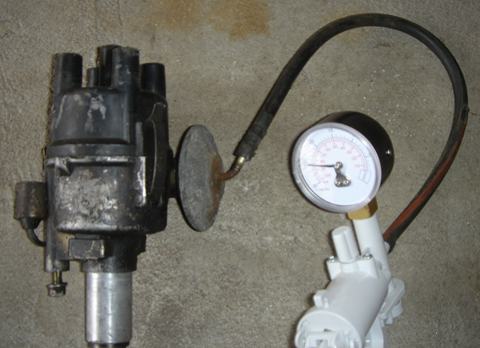Vacuum advance is a spark timing mechanism. It advances the timing under light load, thereby making more power and better fuel economy. It lets the timing go back to normal under heavy loads, thereby preventing detonation (pinking/pinging).
Contents |
Overview
This is a good system that adds both extra performance, better fuel economy, and smoothness to the driving experience.
The only downside is for high-RPM A-series racing engines, where the advance mechanism adds some mechanical instability to the spark timing of the Distributor over 8000 rpm.
Connection
The rubber hose on the Distributor goes straight over the 'vacuum advance port' on the Carburetor. That's it.
TCVAS
Emission controlled vehicles have a Tee in this line for the TCVAS (Transmission Controlled Vacuum Advance System). This system cuts vacuum under some conditions, lessening performance but improving emissions (less pollution).
Dual Control
Starting with 1979 B310 in North America FU Engine models:
The distributor vacuum signal is now received from both the intake manifold and a point near the carburetor throttle valve, through a dual piping system. The system enables the distributor vacuum advance to capable of operating even during idling, thereby improving fuel consumption.
Service Bulletin vol. 311 "Introduction of Datsun 210 Model Series B310 (1979 Model)"
Note: When adjusting the ignition timing, it is necessary to disconnect the manifold vacuum hose, and close off the openings.
Why the two lines? Because it uses a blended vacuum signal. Not exactly the same as pure manifold vacuum, but somewhere in between ported signal and manifold signal. Service Bulletin vol. 311 "Introduction of Datsun 210 Model Series B310 (1979 Model)"
Why two orifices? Because it also uses TCVAS
<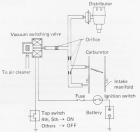
Degrees
For a factory stock engine, including 1.5" exhaust this a typical factory advance curve:
Vacuum Advance - part D412-80 for manual transmission
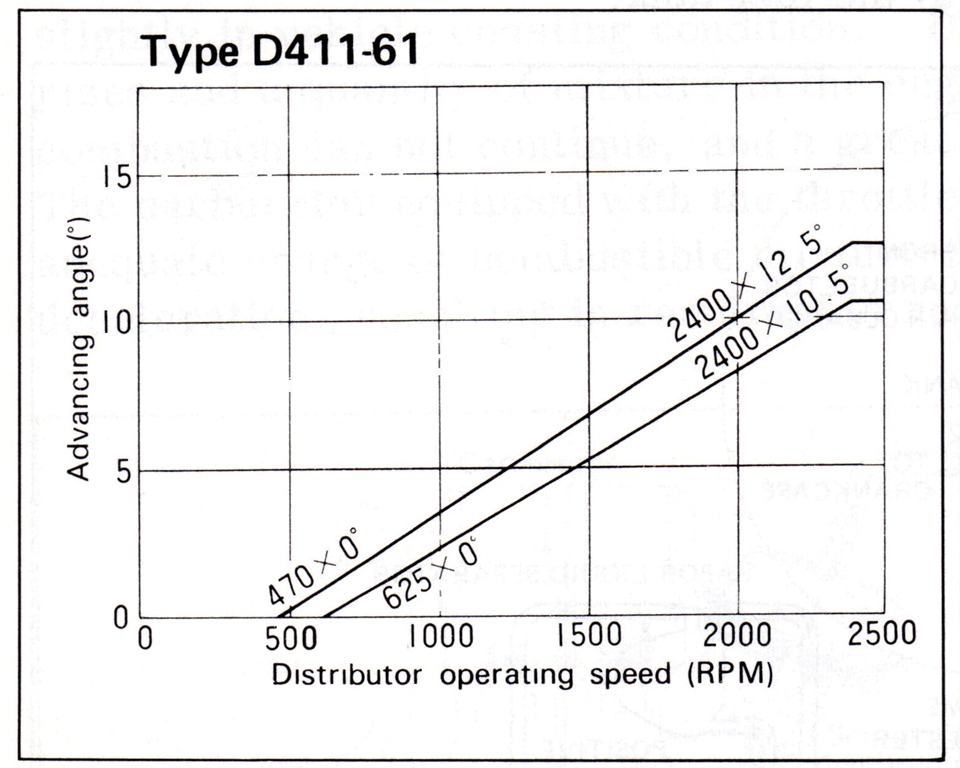
For more details, see Spark Curve
Maintenance
The only maintenance is to periodically make sure the diaphragm is not leaking.
See main article: Vacuum Leaks
Repair
See main article: Vacuum Advance Diaphragm Repair
Vacuum Retard
Some newer USA engines (e.g. 1981 B310) are fitted with a vacuum retard diaphragm. This is for emission control reasons, it actually retards the spark timing. This results in improved emissions (less pollution).
Note that this does not hurt performance. It is activated via the Throttle Opener vacuum control line, so only works when Decelerating.
Vacuum Advance - To use or Not?
Yes, use it. It is good. It advances your engine. More spark = more power.
No, if you are racing full-throttle (drag racing, etc) then vacuum advance won't matter. Remove it for more spark stability over 7000 RPM
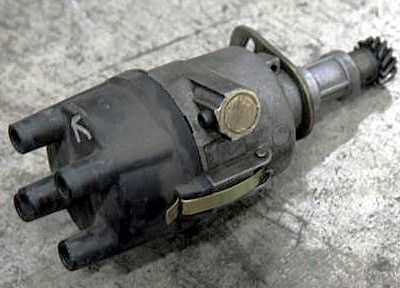
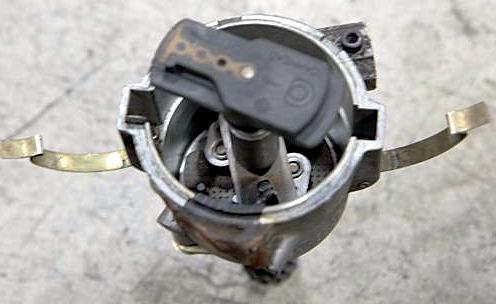
Manifold Vacuum
The stock setup is distributor connected to the carburetor's spark port which works OK.
But it will run slightly better on manifold vacuum. A-series engine runs good with no advance. But will get better fuel economy with it. So connect it to manifold and set timing with it disconnected.
"Ported Vacuum" was strictly an early pre-converter crude emissions strategy and nothing more.
...
After 30-plus years of controlling vacuum advance systems with full manifold vacuum ... along came early emission control requirements ... were introduced to try to reduce hydrocarbons and oxides of nitrogen in the exhaust stream
- John Hinckley, GM engineer involved in development of vacuum advance
Timing And Vacuum Advance 101 in Corvette Enthusiast magazine
Non-stock Carburetors
Just connect it straight to the distributor. Carburetors that have a spark port only one needs to be connected.
To test if that is the spark port, put a vacuum gauge on it.
Spark port
- 0 vacuum at 800 rpm
- full vacuum ~20 inches at 1100 rpm
- vacuum becomes less as throttle is opened
EGR port
- 0 vacuum at 800 rpm
- slight vacuum at 1100 rpm
- vacuum get stronger as throttle is opened
Manifold vacuum port
- full vacuum ~20 inches at 800 rpm
- vacuum becomes less as throttle is opened
Racing Carburetors
If it's multi carb then you need a vacuum manifold (a tube to each runner connected to single reservoir). Connect the distributor to the reservoir.
See main article: Vacuum

![[Datsun 1200 encyclopedia]](/wiki/upload/wiki.png)



